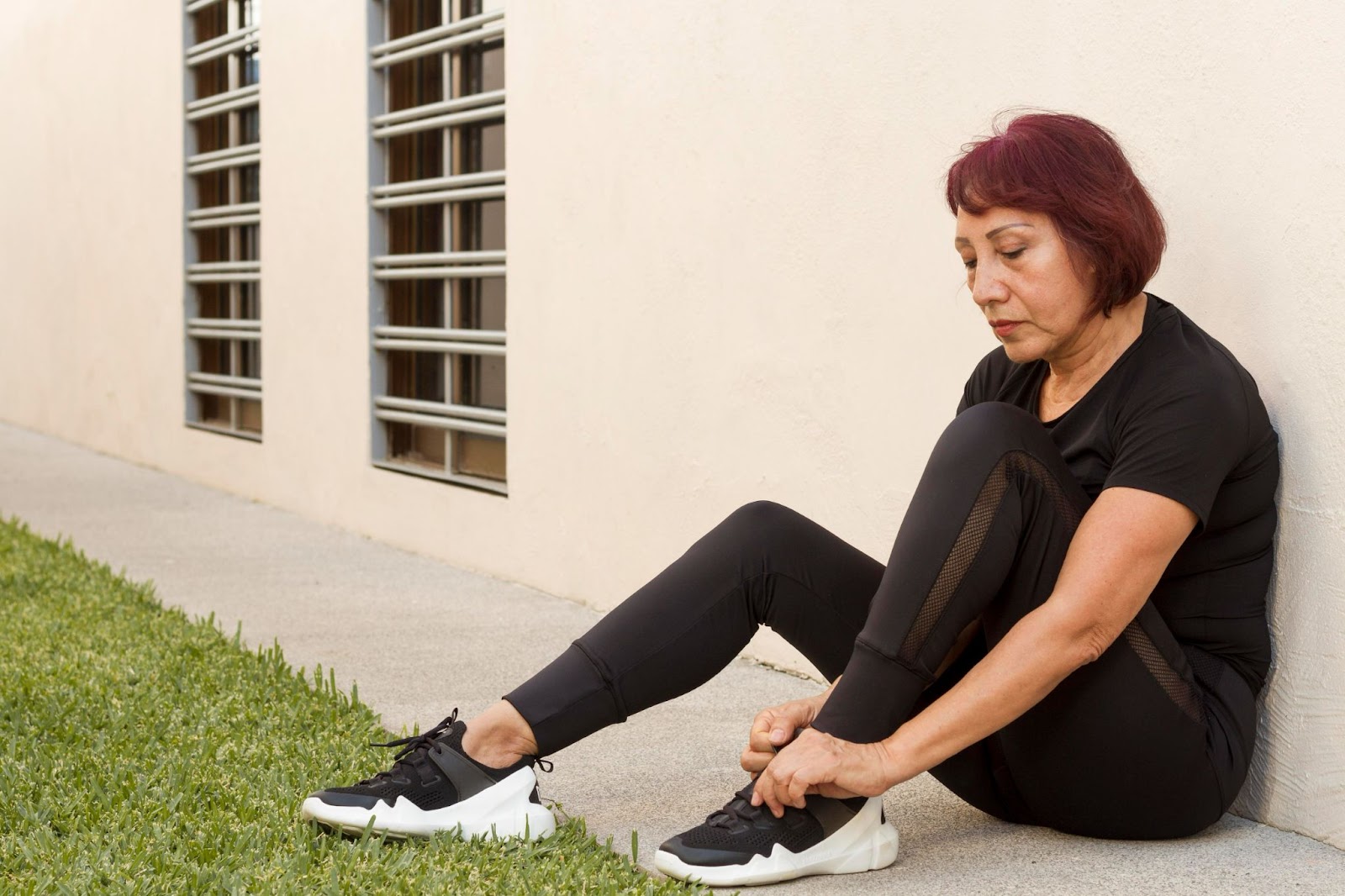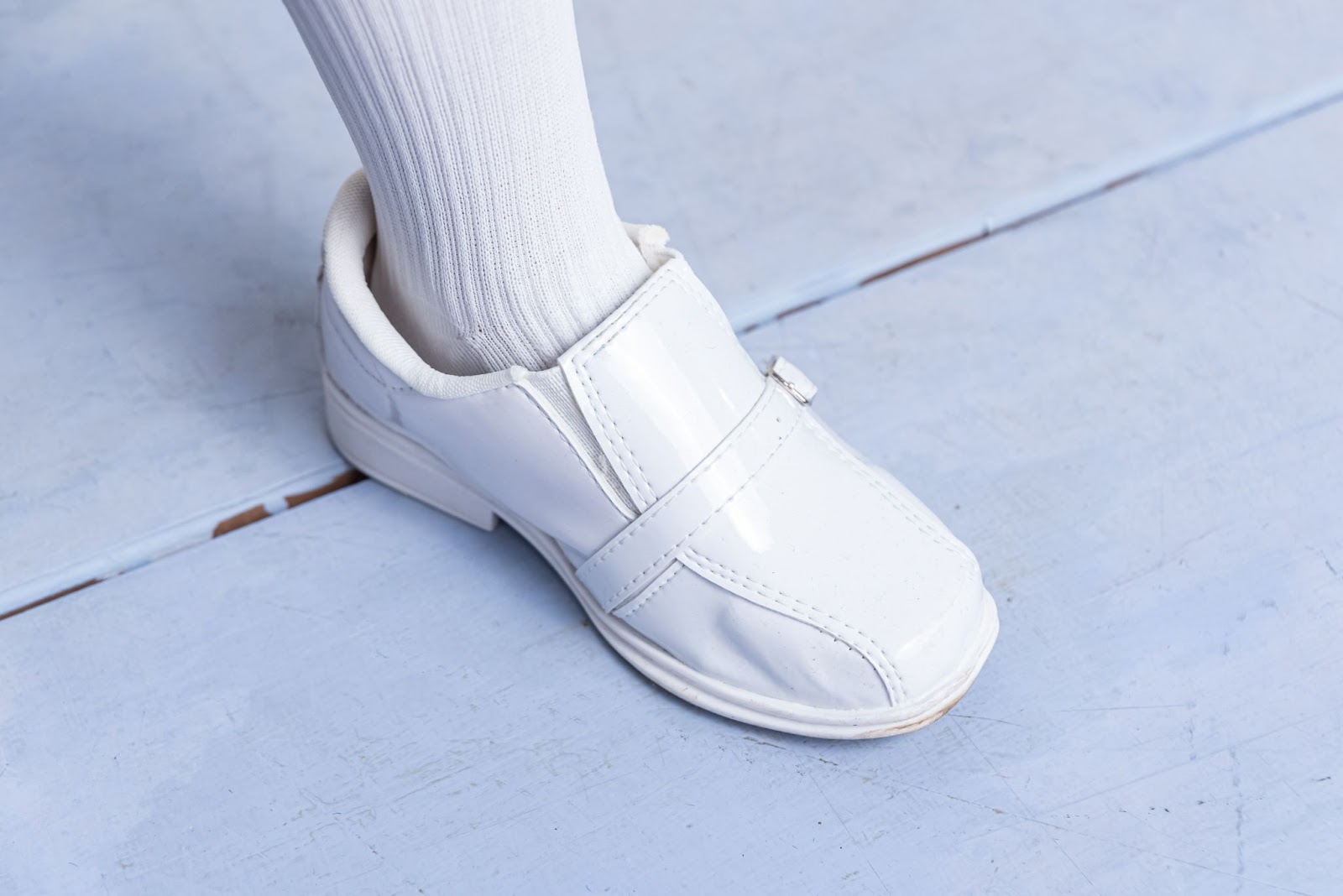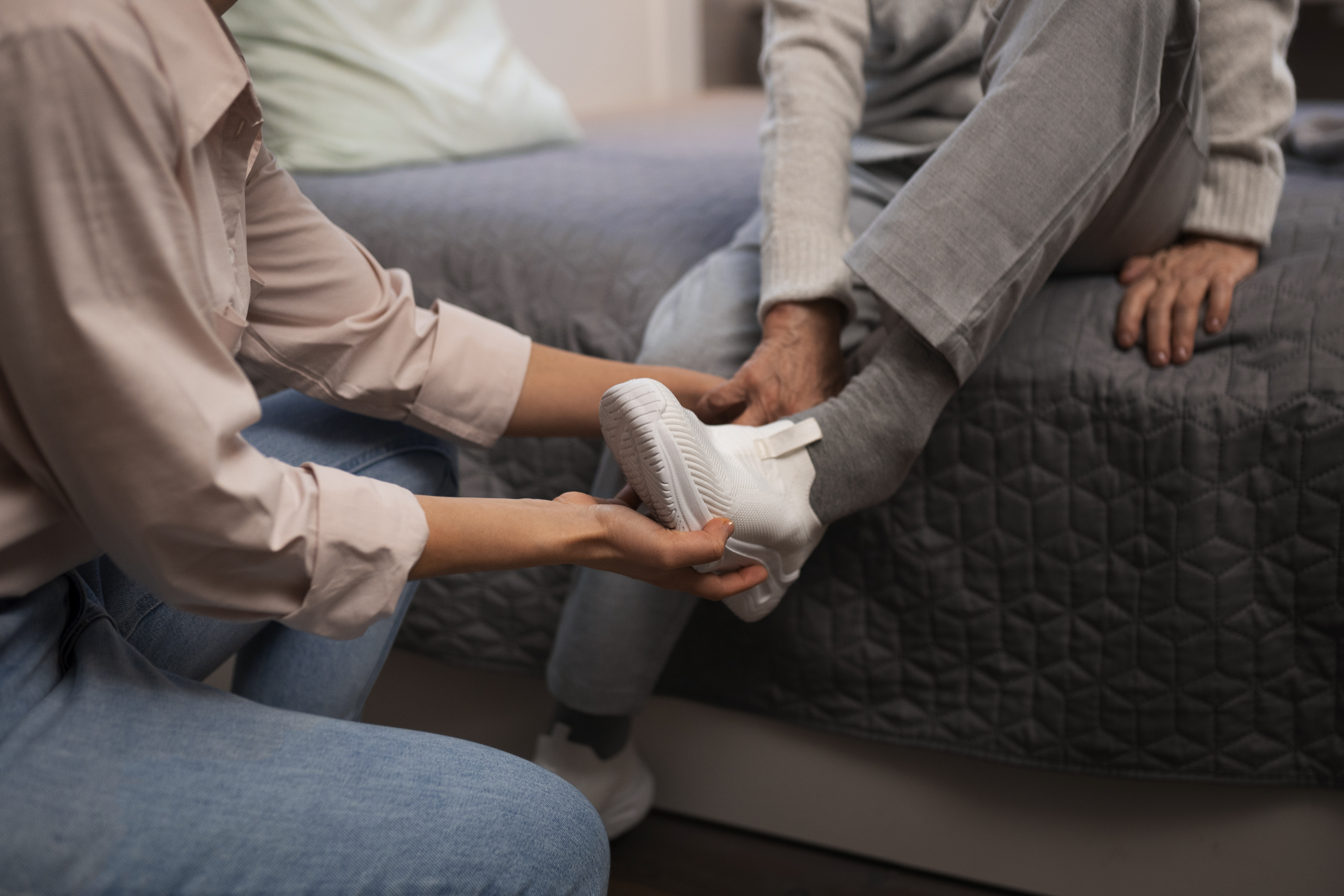Footwear plays a crucial role in maintaining mobility, independence, and overall quality of life, especially for older adults. Research shows that incorrect shoe fit, particularly issues like heel slippage or toe compression, accounts for nearly 45% of foot and ankle injuries among the elderly. Despite this, many seniors and their carers overlook essential aspects when choosing shoes, leading to discomfort, pain, and even falls.
At AHP Podiatry, we understand that the best shoes for elderly individuals aren’t just about length or style; they are about ensuring the right fit, support, and comfort that match the unique needs of aging feet.
Why Proper Footwear Matters for Seniors
As we age, our feet undergo natural changes. The arches tend to flatten, the fat padding beneath the heel thins, and feet often widen or swell throughout the day. These changes mean that the traditional way of measuring shoe size by length alone no longer suffices. Many seniors end up with shoes that are too narrow or don’t accommodate changes in foot volume, causing pressure points, blisters, and pain.

This common assumption that fitting shoes “by length alone” is enough can lead to serious consequences. Ill-fitting shoes can impair balance and increase the risk of falls, which are a leading cause of injury among older Australians. To support healthy ageing, footwear must adapt to these changes, offering width adjustability and volume accommodation. By recognising these factors, seniors can find footwear for seniors that truly supports their foot health rather than compromising it.
Key Features of the Best Shoes for Elderly
When searching for the best shoes for elderly, several often-overlooked features are vital for comfort and safety. First, heel height matters more than most realise. A low, stable heel is critical in preventing falls. High heels or even excessively flat soles can destabilise gait and increase trip risks. Ideally, shoes for older adults should have a modest heel height of around 1 to 3 centimetres to provide the right balance between support and natural foot movement.
The sole flexibility of the shoe also deserves attention. While it might seem that very stiff soles offer more support, they can actually hinder the foot’s natural motion, leading to discomfort and instability. On the other hand, overly flexible soles provide little protection or cushioning. The best shoes for elderly strike a balance, offering enough flexibility to allow normal walking mechanics but also sufficient firmness for shock absorption.
Another critical factor is the toe box shape. Many seniors experience foot deformities such as bunions or hammertoes, making a wide and deep toe box essential to avoid compression and pain. Shoes that squeeze the toes together not only cause discomfort but can also exacerbate these conditions over time. Choosing shoes with an ample toe box helps maintain toe alignment and prevents pressure-related injuries.
Lastly, removable insoles are a significant feature often ignored in mainstream footwear choices. They allow for custom orthotics, which are often prescribed by podiatrists to correct foot mechanics or alleviate pain. Shoes designed to accommodate orthotics, shoes for orthotics elderly, enable seniors to benefit fully from these devices without sacrificing shoe fit or comfort. Adjustable fastenings such as Velcro or laces further enhance fit, accommodating changes in foot size or swelling throughout the day.
Specialised Footwear and the Role of Professional Shoe Assessment
While many shoes marketed towards seniors may appear suitable, specialised footwear designed specifically for older adults’ foot health can offer considerable advantages. These shoes take into account the unique needs related to ageing feet, including extra cushioning, arch support, and materials that reduce friction.
Professional shoe assessment by podiatrists is an important step that many overlook when purchasing shoes for elderly individuals. A thorough assessment considers more than just foot size; it evaluates foot shape, gait, pressure points, and any existing conditions. This detailed analysis ensures recommendations of footwear that not only fits well but also supports mobility and reduces pain.
At AHP Podiatry, we provide personalised shoe assessments tailored to each client’s specific requirements. Whether it’s selecting the best shoes for elderly clients with diabetes, arthritis, or mobility challenges, our approach focuses on improving overall quality of life. We also specialise in recommending shoes for elderly individuals with orthotics, ensuring orthotic devices fit perfectly within chosen footwear and maximising their therapeutic benefits.
Practical Tips for Choosing and Using Footwear for Seniors
Choosing the right footwear involves more than picking the latest style or size off the shelf. Seniors and their carers should pay close attention to the fit beyond the length of the shoe. For example, checking for heel slippage is essential since a loose heel increases instability, while a shoe that compresses toes can cause pain and deformities.
It is advisable to try shoes later in the day when feet tend to swell, ensuring that the fit remains comfortable under natural conditions. Shoes should also be broken in gradually to prevent irritation or blisters. Regular inspection of shoes is important to identify wear and tear that could reduce support or safety features.
Replacing shoes regularly is just as important. Over time, cushioning and support degrade, which can contribute to discomfort and increase fall risk. A general rule is to replace footwear every 6 to 12 months, depending on usage and wear patterns.

For seniors looking to make the best choices, consulting with a podiatrist is invaluable. Professional guidance, including shoe selections, ensures that the footwear assessments align with specific health needs and mobility goals.
Finding the best shoes for elderly individuals involves more than simply picking the right size or style. It requires a thorough understanding of how ageing affects the feet and the importance of features like sole flexibility, heel height, toe box shape, and removable insoles for orthotic accommodation. Proper footwear plays a vital role in preventing foot pain, reducing fall risk, and maintaining mobility and independence.
Proper footwear plays a critical role in maintaining overall foot health in older adults, reducing the risk of falls and improving mobility. For more information on the importance of foot care in seniors, you can refer to the Australian Government’s guidance on foot health in older adults.
By choosing specialised footwear and investing in professional shoe assessment, seniors can experience enhanced comfort and improved quality of life. AHP Podiatry offers personalised services designed to meet these exact needs. Contact us if you or a loved one is seeking advice on the most suitable footwear options.

